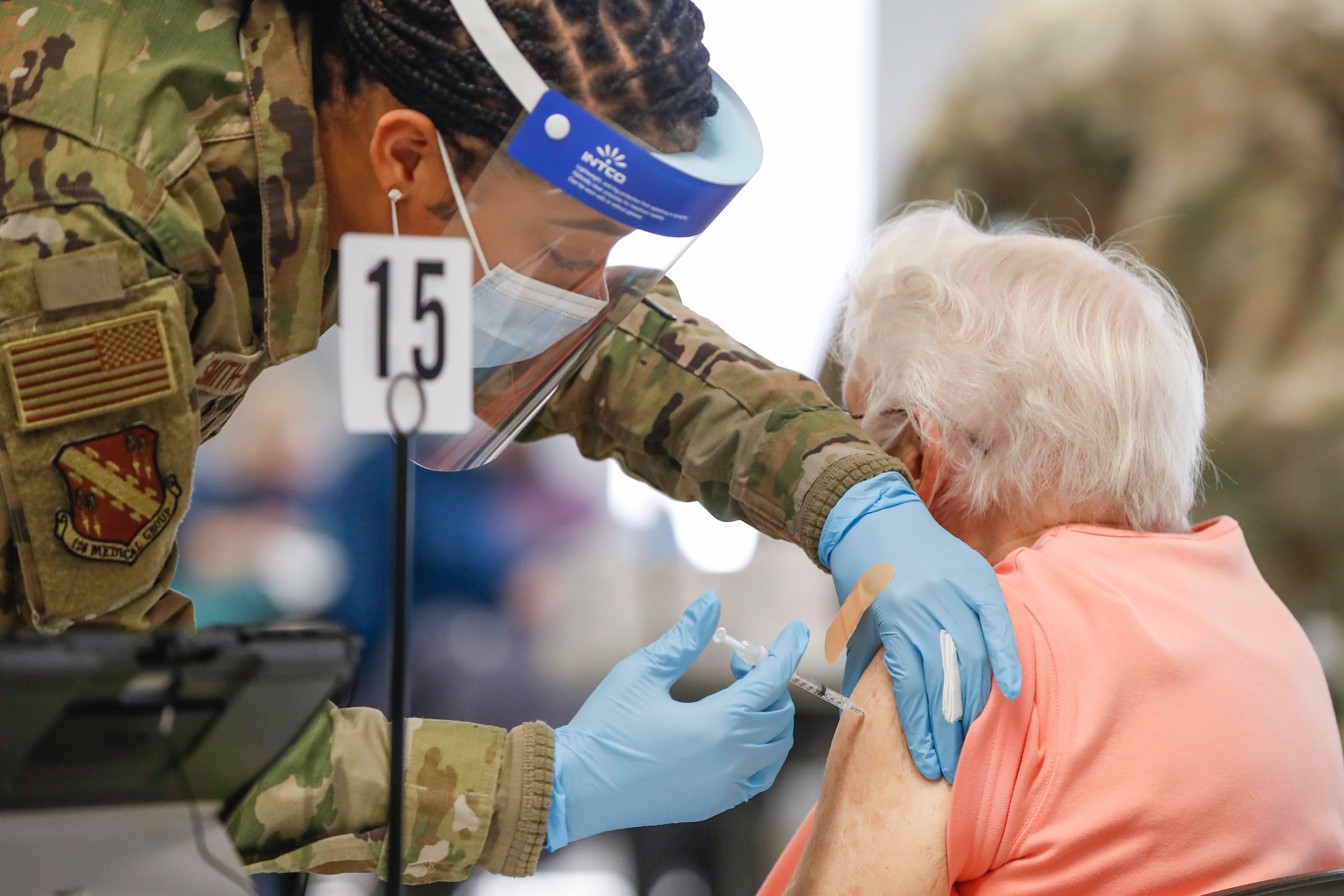A woman receives a Pfizer COVID-19 vaccine at a vaccination center established at the Triton College in River Grove, Illinois, on February 3, 2021.
Kamil Krzaczynski | AFP | Getty Images
Dozens of states and cities are clawing back thousands of extra doses of Covid-19 vaccine that were meant to be used by CVS and Walgreens to immunize residents of nursing homes through a federal partnership set up by the Trump administration.
The partnership, called the Pharmacy Partnership for Long-Term Care Program, allowed states to tap CVS, Walgreens and other retail pharmacies to vaccinate residents and workers of nursing homes. The federal government asked states to “allocate ample vaccine supply” to the program if they opted in, according to Kristen Nordlund, a spokeswoman for the Centers for Disease Control and Prevention.
But now the program’s been left with “surplus vaccine supply” that at least 32 states and cities are taking back from the program and using for the general public, Nordlund said. She added that a combination of vaccine hesitancy, over-estimation of the number of doses needed for the campaign and other factors led to an oversupply of shots.
“Now that pharmacies have made substantial progress in efforts to vaccinate the long-term care facility population — and we have more insight on uptake in facilities enrolled in the program — we are working with jurisdictions to ensure they are able to easily use any excess vaccine for other targeted populations,” Nordlund said in a statement to CNBC.
The federal partnership program has caused headaches among some state health officers. While the pace has picked up in recent weeks, the partnership got off to a slow start in December. The states had to allocate doses for the program early on in the rollout, so the slow pace has created frustration and the appearance that states are failing to administer the shots they have.
Through the partnership, more than 4.2 million doses of vaccine have been administered as of Thursday, according to the CDC. There are almost 5 million long-term care residents and workers in the U.S., the CDC estimates.
It’s not clear exactly how many doses are being diverted from the program, but Illinois, for example, announced this week that it was taking 97,000 doses out of the program.
Doses upfront
Dr. Nirav Shah, director of the Maine Center for Disease Control and Prevention, said that states had to “bank a significant number of doses” for the program in the first three weeks of the vaccine rollout. The partnership was supposed to be complete within six weeks, he added, but “now has slipped into many, many more weeks.”
The slow rollout of that program, Shah said, has made the data look like Maine is leaving doses on the shelf, failing to administer all of the shots it’s been distributed when in fact the state needs more doses, not less. He added that the state is now taking back doses that were allocated for the federal partnership.
“In Maine, we are not sitting around waiting for those doses to just get used on the timetable that retail pharmacies tell us,” he said on a conference call organized by the Association of State and Territorial Health Officials. “Indeed, we are starting to withdraw those doses from the warehouses and move them into general circulation.”
Dr. Thomas Dobbs, state health officer at the Mississippi State Department of Health, echoed Shah’s frustration, saying Mississippi had to commit “the vast majority of our vaccine allocation” upfront to the federal program. The problem with the program was not just its pace, Michael Fraser, CEO of ASTHO, said on the conference call, but it was the number of doses states was expected to set aside for it.
“We had to allocate it all upfront and it’s sat idle for a long, long time,” he said.
Over-estimation
T.J. Crawford, a spokesman for CVS Health, said in an email to CNBC that allocation of doses to the program were made by tallying the number of beds in all long-term care facilities in participating states and multiplying by two to account for staff. He explained there’s now a surplus in some states because “occupancy is far less than bed count and staff uptake remains low.”
Nordlund of the CDC said the agency continues to work with states and jurisdictions to get a clearer picture of how many doses might be needed going forward.
“In some facilities, pharmacy partners wound up with surplus vaccine supply due to multiple factors including vaccine hesitancy, active Covid-19 outbreaks that impacted eligible patient counts, the ability to get six doses from the Pfizer five-dose vials, and lower than expected facility occupancy, particularly during the winter holidays,” she said.
Rick Gates, senior vice president of pharmacies at Walgreens, said in a statement to CNBC that the program is accelerating rapidly, despite a slower initial start.
“Walgreens has completed first dose vaccinations in approximately 75 percent of all long-term care facilities and remains on track to complete first doses across all facilities that selected Walgreens as their vaccine provider by mid-February,” he said. ”Walgreens has conducted or scheduled nearly 70,000 clinics across long-term care facilities.”
